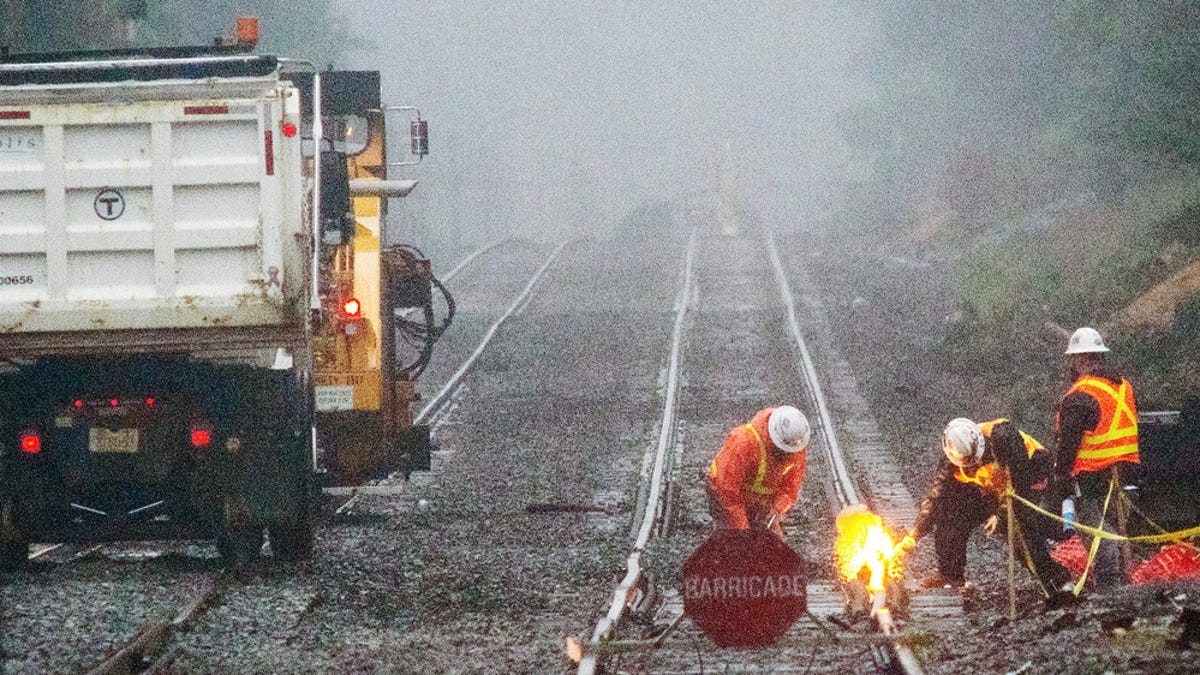Blue-collar jobs are in.
Two in 5 Gen Zers are pursuing blue-collar work, rejecting the collegiate path and learning trades, according to a May 2025 survey of 1,434 young adults by Resume Builder.
Vocational and trade programs are booming, federal data shows.
One reason is a perception that blue-collar jobs pay well, and that college costs are becoming prohibitive.
Against that backdrop, the career site Resume Genius has unveiled a new list of the 10 highest-paying blue-collar jobs.
What qualifies as a blue-collar job?
And what, exactly, is a blue-collar job? Investopedia defines it as a job done outside the office, typically requiring manual labor or skills in a particular trade.
“These are high-paying jobs with good growth. And they don’t require a degree,” said Nathan Soto, author of the Resume Genius report.
“My brother is a pipe fitter,” Soto said, “and he makes six figures.”
Many jobs on this list fall in energy and transportation fields, Soto said. Most are “safe from automation, for now,” he said, although no one can predict the future of robots and AI.
Here are the 10 highest-paying blue-collar jobs.
Elevator and escalator technician
These workers install and maintain elevators, escalators and those moving walkways in airports. The median salary is $106,580, as of 2024, and the top 10% of earners make $149,250. The job typically requires a high school diploma.
Electrical powerline installer and repairer
Line workers service the nation’s power grid. Median salary is $92,560, and the top 10% of earners get $126,610. Job growth is strong, and you generally need only a high school diploma. But it’s a physically demanding job, involving climbing poles and bobbing in bucket trucks.
Aircraft avionics equipment mechanic and technician
These workers see to the safety of air travel. The job can get noisy. Median salary is $79,140, and the top 10% of earners pull down $120,080. The field generally requires some postsecondary training.
Railroad worker
Like trains? This job pays a median salary of $75,680, and the top 10% of earners get $100,130. You typically need a high school diploma and on-the-job training. Expect outdoor work and unpredictable hours.
Stationary engineer and boiler operator
These workers maintain heating, air conditioning and power systems in big buildings and plants. The median salary is $75,190, and the top 10% of earners get $121,200. The job generally requires only a high school diploma, often with an apprenticeship.
Industrial machinery mechanic
These are the workers who keep factories operating smoothly. The median salary is $63,510, and the top 10% of earners make $85,970. The job typically requires a diploma and an apprenticeship.
Plumber, pipefitter and steamfitter
These workers install and repair the systems that move water, gas, chemicals and steam in homes and businesses. the median salary is $62,970, and the top 10% of earners make $105,150. The educational requirement is generally a high school diploma, often combined with an apprenticeship.
Wind turbine technician
Installing and maintaining wind turbines “isn’t for anyone with a fear of heights,” Resume Genius reports. Workers often toil high above remote landscapes. Median salary is $62,580, and the top 10% of earners get $88,090. Job growth is strong. The position generally requires a postsecondary credential.
Electrician
Here’s another job that typically requires only a diploma, often with a paid apprenticeship. Median salary is $62,350, and the top 10% of earners reap $106,030. It’s a large field, and job growth is strong. Overtime pay can be lucrative.
Solar photovoltaic installer
These workers install solar panels. You generally only need a high school diploma to get the job, which pays a median salary of $51,860. The top 10% of earners get $80,150. Job growth is healthy. Be sure to wear sunscreen.
